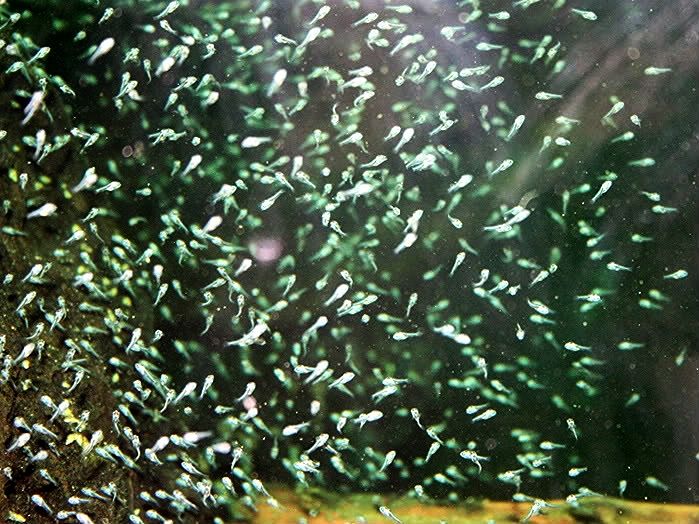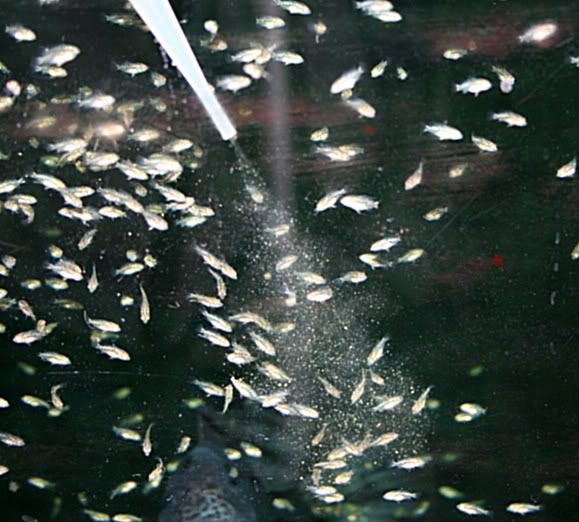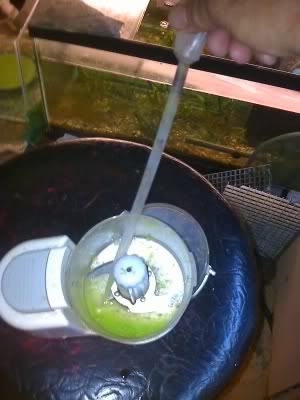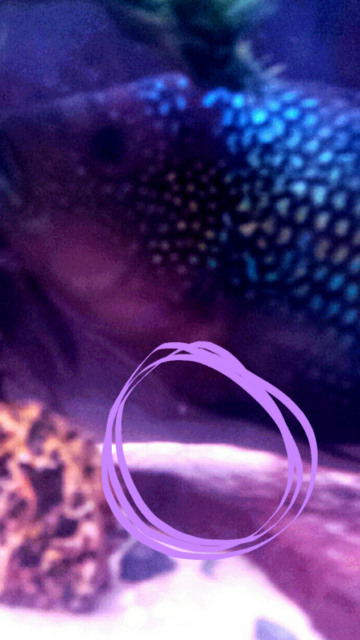I need some help with possible breeding questions... My pair seem to be or have laid eggs.... I have no idea about any of it and I'm in need of some serious help from someone who has experience.. I don't want to do something and mess it up thanks again.
Wanted: Jack dempsey specialist
- Thread starter Lil g
- Start date
-
- Tags
- cichlids emergency jack dempsy
You are using an out of date browser. It may not display this or other websites correctly.
You should upgrade or use an alternative browser.
You should upgrade or use an alternative browser.
Just let them do their thing.
If it doesn't work out this time and they have tank mates, remove the tank mates.
If it doesn't work out this time and they have tank mates, remove the tank mates.
They don't have any tank mates... I removed them (silver dollars) as soon as I saw this behavior.... I don't know if they laid eggs or not yet though but I watched them for hours last night and what they were doing which was the female hovering over different things in the tank specifically the slate, the flowerpot and this tree I have that has a base to it. Still I don't know what eggs look like I heard tan colored.. Which my sand is tan.. I need to know how big the eggs are when the female releases them because I've seen clear tiny balls come out of my female while watching her and then she would kinda shake em off and leave and the male would come and hover and turn while on them.. Now today they are acting crazy digging in the corner of my tank behind a small cave.. And the male was in the flower pot sucking all in the inside top and sides.
Most cichlid eggs look similar whether JD, or any Central American cichlid.

Above is a Nosferatu bartoni with eggs on a log, although creme colored, they will slightly match the color of what they are placed on. The white ones are infertile, there are always a few like that.
After they hatch the parents will hide the wrigglers somewhere in the tank, sometimes they dig pits, sometimes under rocks.
In the wriggler stage they don't eat, but use up nutrients in their yolk sac.
They tend to amass together, sometimes in a pile.

When they start swimming in a school, you need to have food ready, and the more times you can feed per day the better. I hatch brine shrimp, and try to feed 4-6 times per day. I also let as much algae grow in the tank for them to graze on, in between meals.

You can also pipette (or use a turkey baster) to send clouds of frapped food in tank water into the school. I process thawed peas, flake, even eggs yolk with tank water and shoot it into the school of fry.


as fry grow less and less processing is needed


Above is a Nosferatu bartoni with eggs on a log, although creme colored, they will slightly match the color of what they are placed on. The white ones are infertile, there are always a few like that.
After they hatch the parents will hide the wrigglers somewhere in the tank, sometimes they dig pits, sometimes under rocks.
In the wriggler stage they don't eat, but use up nutrients in their yolk sac.
They tend to amass together, sometimes in a pile.

When they start swimming in a school, you need to have food ready, and the more times you can feed per day the better. I hatch brine shrimp, and try to feed 4-6 times per day. I also let as much algae grow in the tank for them to graze on, in between meals.

You can also pipette (or use a turkey baster) to send clouds of frapped food in tank water into the school. I process thawed peas, flake, even eggs yolk with tank water and shoot it into the school of fry.


as fry grow less and less processing is needed

Gosh thanks for the great information.. Even though I've watched them intensely I still don't think I saw eggs anywhere unless they had already hidden them somewhere... What is the whole process of the laying of the eggs for Jack dempseys and how long would it have been before they moved them somewhere else..? Also when I noticed the male going around on the spots where the female was previously sitting, he had something protruding from underneath him that was like a tiny set of clear fins lol that's my best description.. And I'm also currently having an algea bloom as we speak, brown. I should just leave it then?Most cichlid eggs look similar whether JD, or any Central American cichlid.
Above is a Nosferatu bartoni with eggs on a log, although creme colored, they will slightly match the color of what they are placed on. The white ones are infertile, there are always a few like that.
After they hatch the parents will hide the wrigglers somewhere in the tank, sometimes they dig pits, sometimes under rocks.
In the wriggler stage they don't eat, but use up nutrients in their yolk sac.
They tend to amass together, sometimes in a pile.
When they start swimming in a school, you need to have food ready, and the more times you can feed per day the better. I hatch brine shrimp, and try to feed 4-6 times per day. I also let as much algae grow in the tank for them to graze on, in between meals.
You can also pipette (or use a turkey baster) to send clouds of frapped food in tank water into the school. I process thawed peas, flake, even eggs yolk with tank water and shoot it into the school of fry.
as fry grow less and less processing is needed

If you have an true algal bloom, I wouldn't treat it, it is good food for fry.
Spawning display and behavior often starts days before the spawn, and tubes drop just before spawning. Once eggs are put down, they hatch in 24-48 hours to hatch depending on your average temp. The wriggler stage can last 2-4 days.
below is an egg tube.

Spawning display and behavior often starts days before the spawn, and tubes drop just before spawning. Once eggs are put down, they hatch in 24-48 hours to hatch depending on your average temp. The wriggler stage can last 2-4 days.
below is an egg tube.

See I definitely think I saw that or something similar but it was on my male? What would that have been?.. And he had that out the whole time they were going in circles from different spots.. It's gone today. I'm only asking all of these questions because they showed every sign and movement of breeding last night for about 8/9 hours straight.. But I never saw any eggs. Is it possible I could have missed them and they had already laid before I noticed lol. Thanks so much for answering my questions btwIf you have an true algal bloom, I wouldn't treat it, it is good food for fry.
Spawning display and behavior often starts days before the spawn, and tubes drop just before spawning. Once eggs are put down, they hatch in 24-48 hours to hatch depending on your average temp. The wriggler stage can last 2-4 days.
below is an egg tube.

The male will also show a breeding tube, it is usually thinner/smaller, the females needs to pass eggs thru.
They may have already been laid, and wrigglers sequestered. They may have been immediately eaten, it often takes young cichlids 2 or 3 times before they get it right, especially if young. Full adult JDs may be 10" for males, and 6-7" for females.
Here is a pic of a male haitiensus with breeding tube out, also a bit hard to see.

The same male, guarding eggs.

Here are some I filmed in the Yucatan, near Cancun. Click pic to run

They may have already been laid, and wrigglers sequestered. They may have been immediately eaten, it often takes young cichlids 2 or 3 times before they get it right, especially if young. Full adult JDs may be 10" for males, and 6-7" for females.
Here is a pic of a male haitiensus with breeding tube out, also a bit hard to see.

The same male, guarding eggs.

Here are some I filmed in the Yucatan, near Cancun. Click pic to run



